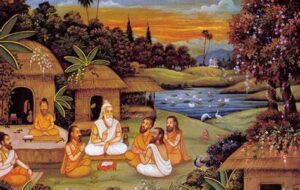
Minimalism is a design and lifestyle movement that has gained increasing popularity in recent years. It advocates for living with less, both in terms of physical possessions and mental clutter, in order to find greater happiness and fulfillment. At its core, minimalism is about simplifying one’s life to the essentials, letting go of excess and distractions, and focusing on what truly matters.
The minimalist movement can trace its roots back to the early 20th century, with the Bauhaus School’s emphasis on form and function. In more recent times, minimalism has been promoted by figures such as Marie Kondo, whose book “The Life-Changing Magic of Tidying Up” became a bestseller, and Joshua Fields Millburn and Ryan Nicodemus, whose blog “The Minimalists” has inspired many to embrace a minimalist lifestyle.

“We really must understand that the lust for affluence in contemporary society is psychotic. It is psychotic because it has completely lost touch with reality. We crave things we neither need nor enjoy.”
-Richard Foster
One of the main benefits of minimalism is that it allows individuals to declutter their physical space, which can have a positive impact on their mental well-being. A cluttered environment can be overwhelming and distracting, leading to increased stress and decreased productivity. By getting rid of unnecessary possessions, minimalists are able to create a calm and peaceful living space that is conducive to relaxation and focus.
In addition to the physical benefits, minimalism can also lead to financial savings. By buying fewer possessions, minimalists are able to reduce their expenses and save money. This can allow them to focus on more important things, such as investing in experiences, education, and personal growth.
Minimalism is not about depriving oneself or living in extreme poverty. It’s about finding a balance and living with only what is necessary and brings joy. It’s about being mindful of one’s possessions and making conscious choices about what to bring into one’s life. This can involve decluttering one’s home, but it can also extend to other areas of life, such as work and relationships.
The minimalist lifestyle can take many forms, and there is no one-size-fits-all approach. Some minimalists choose to live in small, sparsely furnished apartments, while others prefer a more traditional home with a minimalist aesthetic. The key is to find what works best for you and your needs, and to be willing to make changes as necessary.
One way to get started with minimalism is to do a declutter challenge, where you go through each room of your house and get rid of anything that you no longer need or use. This can be a daunting task, but the end result is a more organized and peaceful living space.
Another aspect of minimalism is mindfulness, which involves being present in the moment and not getting caught up in distractions. This can involve setting aside time for meditation or other relaxation techniques, as well as being more aware of one’s thoughts and emotions. By practicing mindfulness, minimalists are able to focus on the present and let go of the past and future, leading to greater happiness and contentment.
Minimalism is not for everyone, and it’s important to find a balance that works for you. It’s okay to have possessions and enjoy material comforts, as long as they bring joy and do not become a source of stress or burden. The key is to be mindful of what you bring into your life and to let go of anything that does not serve a purpose or bring happiness.
In conclusion, minimalism is a lifestyle movement that advocates for living with less in order to find greater happiness and fulfillment. It involves decluttering one’s physical space, practicing mindfulness, and making conscious choices about what to bring into one’s life. By embracing minimalism, individuals can simplify their lives, reduce stress and distractions, and focus on what truly matters.






